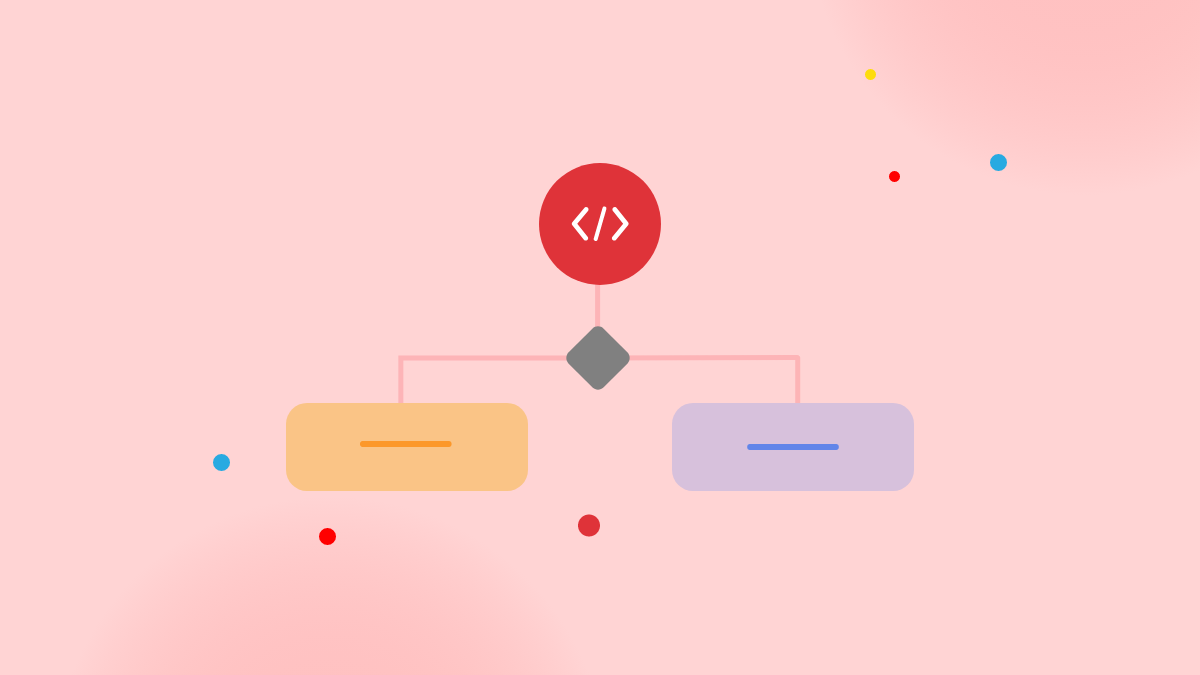
The Codebase Crossroads
Great products start with a spark. But what keeps them from burning out?
In the earliest stages of software development, energy flows fast. Ideas are fluid, and code takes shape in bursts of inspiration. This is where most products are born — in what many developers call “vibe coding.” It feels natural, fast, and often brilliant. But as teams scale, features pile up, and users expect stability, something changes.
That raw momentum? It begins to break under the weight of complexity.
Every growing codebase eventually hits a fork in the road. One path leads to scalable, sustainable development with fewer surprises and faster iteration. The other veers toward chaos, riddled with tech debt, brittle architecture, and mounting friction with every deploy.
The difference isn’t talent or ambition. It’s structure.
According to McKinsey, high-performing software teams are those that combine creative flexibility with strong technical foundations, allowing them to move fast without breaking things. This balance is the key to surviving growth — and thriving in it.
In this post, we’ll unpack the trade-offs between vibe and structure, explore how great codebases evolve over time, and offer a clear framework for building software that doesn’t just work today but continues to deliver tomorrow.
The Vibe Philosophy: Creative Chaos or Speed Hack?
Define the Vibe
Vibe coding is the software equivalent of jazz. It’s fluid, intuitive, and thrives on spontaneity. Developers follow momentum, building features in the moment rather than mapping them out. There are few rules, no rigid structure, and an implicit trust in personal rhythm over shared process.
This approach is most common during the early life of a product. Think MVPs that need to ship yesterday. Hackathons with tight deadlines and big ambitions. Side projects where creative freedom matters more than long-term sustainability. In these moments, vibe-driven development feels like superpower coding—fast, fun, and frictionless.
Where It Thrives
- Early-stage products where the primary goal is idea validation, not maintainability.
- Hackathons and proof-of-concepts that demand speed over polish.
- Solo or small teams with shared context and zero red tape.
- Creative experiments or internal tools that may never reach production.
In these settings, formal structure can feel like unnecessary drag. Vibe lets teams move fast, improvise boldly, and explore freely without the overhead of planning and process.
Pros of Vibe
1. Speed over ceremony
With no need for design reviews or rigorous testing, ideas turn into code almost instantly.
2. Creative freedom
Developers are free to shape logic however they like, often leading to elegant and expressive solutions—at least in the moment.
3. Rapid validation
Vibe supports experimentation. It helps teams quickly test assumptions and iterate based on real feedback.
The Cost of Momentum
The flip side of that momentum is instability. Vibe code lacks guardrails. It works—until it doesn’t.
1. Inconsistent architecture
Without structure, codebases evolve into tangled webs of one-off logic and patchwork fixes. What was once elegant becomes opaque and fragile.
2. Scaling friction
Bringing new developers into a vibe-based codebase is like dropping someone into a conversation mid-sentence. The lack of documentation, naming conventions, and modularity makes onboarding painful and progress risky.
3. Technical debt accelerates
Every shortcut taken in the name of speed builds up interest. Before long, teams spend more time fixing issues than shipping new features.
4. Hard to trust, harder to grow
Bugs hide in unexpected places. Regressions sneak in. Refactors break things. A codebase built on vibes rarely earns the confidence required for long-term growth.
As complexity increases, vibe without structure becomes less a feature and more a liability. What once moved fast begins to slow everything down.
The Case for Structure: Discipline Is a Superpower
When the stakes get higher and the team gets bigger, structure isn’t just helpful. It becomes essential. What starts as a creative burst eventually needs to become a system, and structured coding is how high-performing teams scale without breaking.
 What Is Structured Coding?
What Is Structured Coding?
Structured coding is the intentional act of building software with foresight. It’s not about limiting creativity. It’s about giving ideas the scaffolding they need to grow.
At its core, structured coding means:
- Intentional architecture: Whether it’s layered, service-oriented, or domain-driven, every decision serves a long-term purpose.
- Predictable conventions: Naming, styling, and file organization follow patterns that everyone understands.
- Systems thinking: Each function, class, and module connects to the whole with clarity and consistency.
Structure replaces gut feel with deliberate choices. It transforms engineering from a sprint to a marathon-ready discipline.
The Core Practices Behind Structure
Teams that build for scale rely on practices that create momentum without sacrificing control. These include:
- Modular codebases: Code is broken into self-contained units that are easy to test, maintain, and reuse.
- Continuous Integration and Delivery (CI/CD): Automated pipelines keep the codebase deployable at all times and reduce the risks of change.
- Comprehensive test coverage: Unit, integration, and end-to-end tests catch issues early and improve confidence.
- Documentation as a habit: From in-line comments to living system guides, structured teams document as they build, not after.
Why Structure Wins When You Scale
Growth creates pressure. More features, more users, and more developers lead to more complexity. A structured codebase absorbs that pressure. It becomes the foundation that lets teams move fast without breaking things.
Here’s what structure enables:
- Faster onboarding: New developers can get productive quickly by following clearly defined patterns.
- Speedier reviews and safer changes: When every file and function follows a standard, reviews are focused and changes are less risky.
- Fewer production issues: Proactive testing and documentation reduce bugs, minimize regressions, and keep systems resilient.
- More focus on growth: Instead of firefighting, teams can ship features, explore new ideas, and deliver customer value.
As Gartner notes, the best engineering organizations build reliability and adaptability into their systems from the beginning. Structure is not a constraint. It is a growth accelerator.
In fast-moving environments, discipline becomes a competitive edge. Structure isn’t bureaucracy. It’s strategy.
When Vibe Meets Velocity: The Growth Cliff
 The Inflection Point
The Inflection Point
Early development often thrives on vibe. There’s energy, momentum, and creative flow. New features get shipped fast. The team is small. Communication is fluid. But as user numbers climb and more developers join the repo, that same freedom begins to feel fragile. Suddenly, your “move fast” philosophy starts creating messes you can’t ignore.
This is the inflection point. The moment when vibe hits velocity. What once felt agile now feels unstable. What was once a playground becomes a production platform with real-world consequences.
What Typically Breaks
1. Poorly Scoped Logic
Quick decisions made under pressure start to backfire. Functions lack clear ownership. Boundaries blur. Logic overlaps. Developers step on each other’s toes without realizing it.
2. Brittle Integrations
One small change in one part of the system triggers unexpected failures in others. Why? Because those spontaneous integrations weren’t built to evolve. They were built to just work—until they don’t.
3. Silent Tech Debt
Not all tech debt screams. Some creeps in quietly. It hides in untested edge cases, inconsistent naming conventions, and code that almost works. Over time, it slows velocity and amplifies the risk of failure.
According to a McKinsey report, companies with high developer velocity outperform their peers by four to five times in revenue growth. But that kind of velocity depends on disciplined infrastructure. Vibes alone won’t get you there.
Realization Moment
This is where most teams hit the wall. Velocity drops. Bugs pile up. Onboarding stalls. Every new feature feels risky. The team is working harder but shipping slower.
You realize you’re not building anymore. You’re maintaining. Debugging. Rewriting. Patching. The creative energy that launched the product is now consumed by firefighting.
And the worst part? Everyone can feel it.
The codebase is no longer an enabler. It’s a blocker. What got you here won’t get you there. Now what?
That question is the beginning of structure.
Striking a Balance: Vibe Early, Structure Always
The best codebases aren’t born perfect. They evolve—starting with instinct, then maturing into intention.
In early-stage development, momentum matters. You need space to explore ideas, iterate quickly, and build without friction. Vibe coding delivers just that. It’s fluid, expressive, and accelerates discovery. But momentum without structure eventually invites chaos.
As traction builds, teams grow and complexity compounds. What once worked for one developer in a sprint becomes unmanageable for ten across multiple cycles. At this point, structure is no longer optional. It’s the scaffolding that keeps your product stable while everything around it scales.
Hybrid Wisdom in Practice
- Early-stage? Trust the vibe. Build fast, learn fast, ship often.
- Getting traction? Bring in structure. Introduce lightweight standards, consistent naming, and initial test coverage.
- Scaling? Make structure foundational. Modularize your architecture, automate your builds, standardize workflows, and document everything.
How to Evolve Your Codebase Gracefully
- Refactor early and often. Don’t wait for tech debt to accumulate. A clean codebase is a healthy codebase.
- Structure in phases. Start with modular components. Layer in tests and CI pipelines. Add meaningful docs as features mature.
- Protect creativity. Great structure doesn’t suppress innovation. It enables it. Developers spend less time untangling and more time building.
Structured systems scale. Creative energy thrives when channeled through the right frameworks. Balance is not just possible—it’s essential.
5 Principles for Sustainable Codebases
Building software is not just about writing code. It is about writing code that lasts. As your product scales and your team grows, the cost of messy logic, inconsistent patterns, and forgotten files multiplies. Below are five timeless principles that help codebases survive growth without spiraling into chaos.
 1. Start with just enough structure
1. Start with just enough structure
Every project begins somewhere. Whether it is a solo sprint or a team-wide initiative, lightweight structure early on pays off in dividends. Even basic frameworks, consistent folder architecture, and naming conventions can prevent small issues from becoming major blockers.
2. Refactor like it’s rent
Just as good tenants maintain their space, good engineers maintain their code. Refactoring is not a luxury or a sprint-end activity. It is the rent you pay to keep your codebase functional, clear, and extendable. When ignored, entropy builds.
3. Modular thinking wins
When your code is modular, you reduce coupling and make change safe. Isolate functionality. Abstract complexity. Repeat it until your system starts looking like Lego blocks, not spaghetti. This modularity makes it easier to test, scale, and re-use code without reinventing the wheel.
4. Make documentation a culture
Documentation is not about perfection. It is about context. Well-documented code helps current and future team members understand not just what was built, but why. As your engineering team scales, clear documentation becomes the glue that holds tribal knowledge together. Keep it simple, keep it close to the code, and update it often.
5. Automate sanity
Code reviews, style enforcement, test coverage, integration checks—none of these should rely on memory. Automate them. Let linters catch the syntax slips. Let CI flag the broken tests. Automation turns best practices into defaults, not exceptions. This consistency becomes a quiet safeguard, making it easier to scale without compromising quality.
The Quiet Payoff of Structure
Zoom Out:
Structure isn’t just about cleaner code. It’s about creating an environment where teams move faster, stress less, and scale smarter.
When your codebase is predictable, modular, and documented, every developer can contribute with confidence. There’s less mental overhead, fewer urgent patches, and far more time spent on forward momentum. This clarity reduces handoffs, accelerates reviews, and makes onboarding feel like a guided tour instead of a maze.
Research shows that engineering teams who invest in structured development practices consistently outperform those who don’t. These systems lead to fewer blockers, smoother incident responses, and faster feature delivery, all without compromising stability.
Structure turns knowledge into leverage. It makes best practices repeatable. And when systems are well-defined, creativity doesn’t shrink — it sharpens.
The long-term payoff? Fewer surprises. More velocity. And a team that doesn’t just write code, but builds sustainably at scale.
The Planally Perspective: Structure That Doesn’t Kill the Spark
The smartest engineering cultures know when to lean into the vibe and when to shift gears. In the early innings, momentum matters. Quick wins, spontaneous builds, and creative hacks can spark innovation. But as teams grow and expectations rise, the systems behind the work need to mature.
This balance isn’t just for developers. It applies across every function—product, marketing, legal, procurement. When workflows lack structure, the same issues emerge: tasks go missing, accountability slips, and progress stalls.
This is where Planally adds value.
Planally helps teams bring clarity and consistency to the way work gets done. From the first request to the final step, workflows become visible, organized, and easy to manage. The platform adapts as you scale, supporting complexity without locking you into rigid templates. Whether you are automating internal approvals or coordinating company-wide launches, Planally ensures that every step flows with precision.
Structure is not about slowing things down. It is about building a foundation strong enough to handle growth, yet flexible enough to support creativity.
Structure scales. Vibes fade. Choose wisely.
Discover how smart workflow automation begins at Planally.



